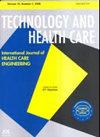SwinDFU-Net:用于识别糖尿病足溃疡感染的深度学习变压器网络。
IF 1.4
4区 医学
Q4 ENGINEERING, BIOMEDICAL
引用次数: 0
摘要
背景糖尿病足溃疡(DFUs)中感染的识别具有挑战性,原因在于类内的可变性、类间的视觉相似性、与健康皮肤的对比度降低以及伪影的存在。现有的研究侧重于视觉特征和组织分类,而不是感染检测,而感染检测对于评估 DFU 和预测截肢风险至关重要。该模型采用混合 CNN 和 Swin Transformer 架构。该模型采用 Grad CAM 技术来可视化 CNN 和变换器模块的决策过程。结果该模型实现了较高的性能指标:灵敏度(95.98%)、特异度(97.08%)、准确度(96.52%)和马太相关系数(0.93)。这些结果表明了该模型在快速诊断 DFU 感染方面的有效性,凸显了其作为医疗专业人员的宝贵工具的潜力。 结论混合 CNN 和 Swin Transformer 架构有效地结合了两种模型的优势,即使在复杂的情况下,也能将 DFU 图像准确地分类为感染或非感染。Grad CAM 的使用为模型的决策过程提供了洞察力,有助于识别 DFU 图像中的感染区域。这种方法有望加强对 DFU 感染的临床评估和管理。本文章由计算机程序翻译,如有差异,请以英文原文为准。
SwinDFU-Net: Deep learning transformer network for infection identification in diabetic foot ulcer.
BACKGROUND
The identification of infection in diabetic foot ulcers (DFUs) is challenging due to variability within classes, visual similarity between classes, reduced contrast with healthy skin, and presence of artifacts. Existing studies focus on visual characteristics and tissue classification rather than infection detection, critical for assessing DFUs and predicting amputation risk.
OBJECTIVE
To address these challenges, this study proposes a deep learning model using a hybrid CNN and Swin Transformer architecture for infection classification in DFU images. The aim is to leverage end-to-end mapping without prior knowledge, integrating local and global feature extraction to improve detection accuracy.
METHODS
The proposed model utilizes a hybrid CNN and Swin Transformer architecture. It employs the Grad CAM technique to visualize the decision-making process of the CNN and Transformer blocks. The DFUC Challenge dataset is used for training and evaluation, emphasizing the model's ability to accurately classify DFU images into infected and non-infected categories.
RESULTS
The model achieves high performance metrics: sensitivity (95.98%), specificity (97.08%), accuracy (96.52%), and Matthews Correlation Coefficient (0.93). These results indicate the model's effectiveness in quickly diagnosing DFU infections, highlighting its potential as a valuable tool for medical professionals.
CONCLUSION
The hybrid CNN and Swin Transformer architecture effectively combines strengths from both models, enabling accurate classification of DFU images as infected or non-infected, even in complex scenarios. The use of Grad CAM provides insights into the model's decision process, aiding in identifying infected regions within DFU images. This approach shows promise for enhancing clinical assessment and management of DFU infections.
求助全文
通过发布文献求助,成功后即可免费获取论文全文。
去求助
来源期刊

Technology and Health Care
HEALTH CARE SCIENCES & SERVICES-ENGINEERING, BIOMEDICAL
CiteScore
2.10
自引率
6.20%
发文量
282
审稿时长
>12 weeks
期刊介绍:
Technology and Health Care is intended to serve as a forum for the presentation of original articles and technical notes, observing rigorous scientific standards. Furthermore, upon invitation, reviews, tutorials, discussion papers and minisymposia are featured. The main focus of THC is related to the overlapping areas of engineering and medicine. The following types of contributions are considered:
1.Original articles: New concepts, procedures and devices associated with the use of technology in medical research and clinical practice are presented to a readership with a widespread background in engineering and/or medicine. In particular, the clinical benefit deriving from the application of engineering methods and devices in clinical medicine should be demonstrated. Typically, full length original contributions have a length of 4000 words, thereby taking duly into account figures and tables.
2.Technical Notes and Short Communications: Technical Notes relate to novel technical developments with relevance for clinical medicine. In Short Communications, clinical applications are shortly described. 3.Both Technical Notes and Short Communications typically have a length of 1500 words.
Reviews and Tutorials (upon invitation only): Tutorial and educational articles for persons with a primarily medical background on principles of engineering with particular significance for biomedical applications and vice versa are presented. The Editorial Board is responsible for the selection of topics.
4.Minisymposia (upon invitation only): Under the leadership of a Special Editor, controversial or important issues relating to health care are highlighted and discussed by various authors.
5.Letters to the Editors: Discussions or short statements (not indexed).
 求助内容:
求助内容: 应助结果提醒方式:
应助结果提醒方式:


